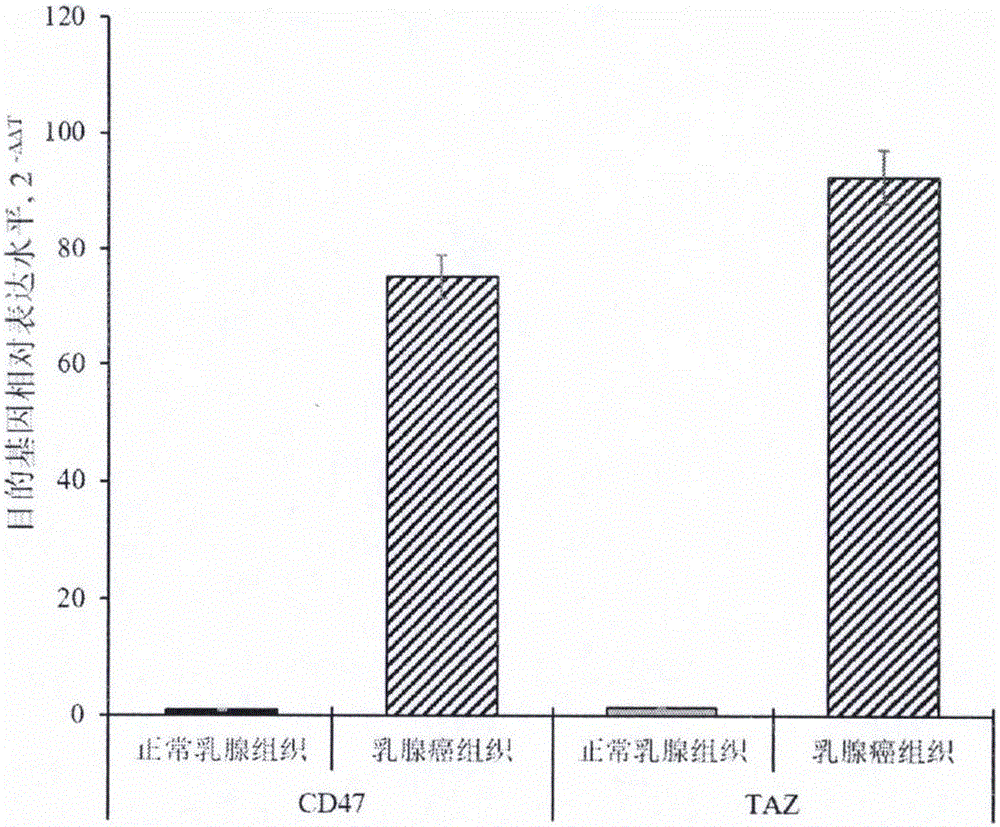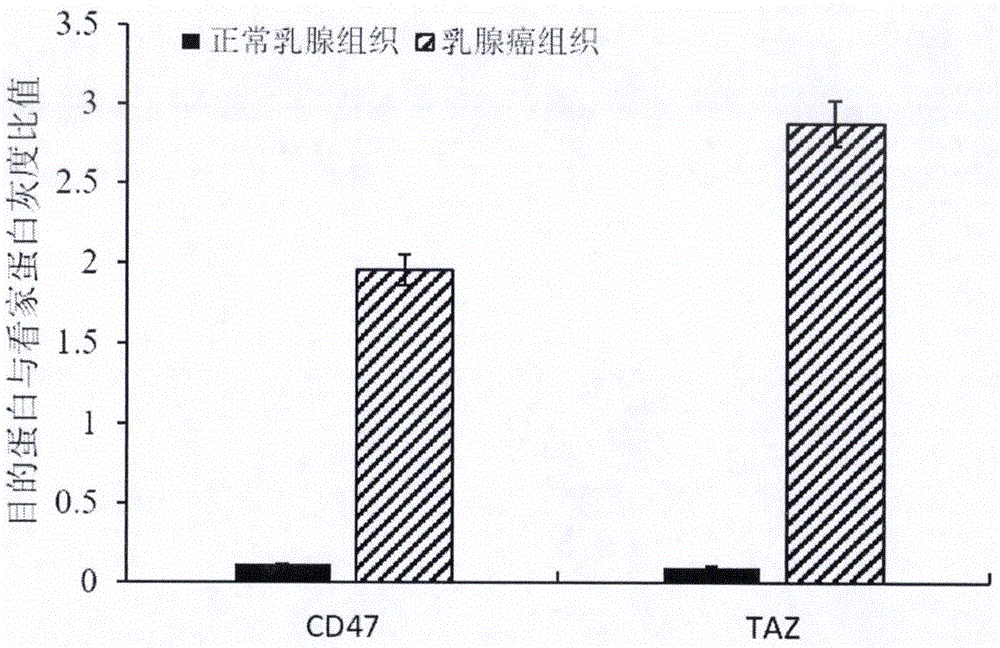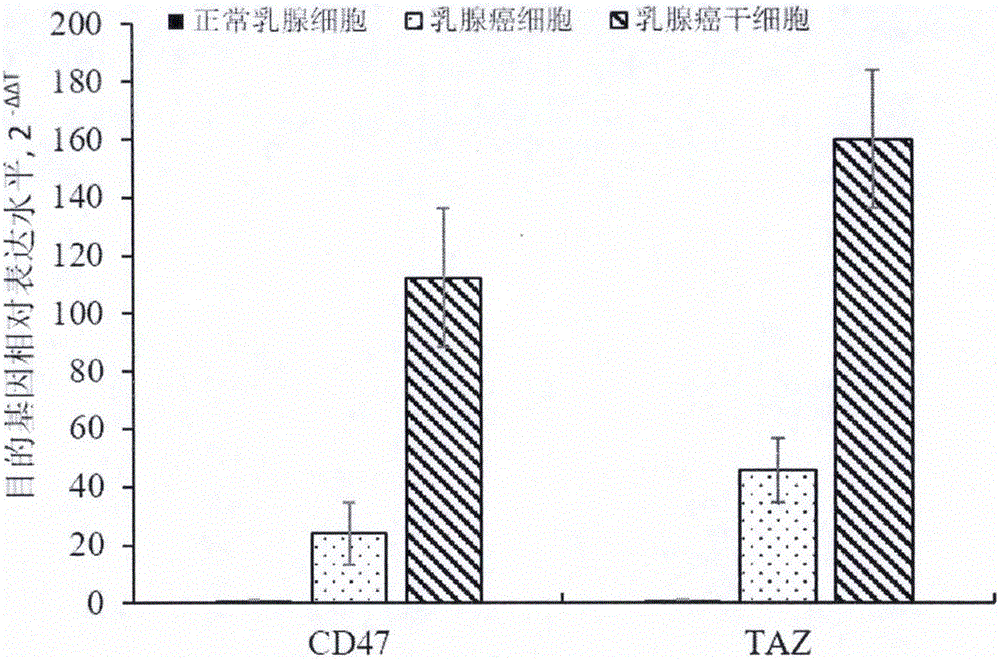Products and preparation method of double chimeric antigen receptor gene modified T lymphocyte targeting breast cancer stem cells
A breast cancer stem cell and chimeric antigen receptor technology, applied in the field of T lymphocytes, can solve the problems of poor specificity of targeted tumor cell killing and limited clinical treatment of malignant tumors.
- Summary
- Abstract
- Description
- Claims
- Application Information
AI Technical Summary
Problems solved by technology
Method used
Image
Examples
preparation example Construction
[0052] The invention relates to a method for preparing T lymphocytes modified with chimeric antigen receptor genes targeting breast cancer stem cells, which is characterized in that the gene recombination of bispecific chimeric antigen receptors containing CD47 and TAZ is recombined into viruses The carrier is transfected into human T lymphocytes, which highly express the bispecific chimeric antigen receptor gene, which can specifically bind to breast cancer cells and breast cancer stem cells expressing CD47 and TAZ, and activate the first signal and co-stimulatory signal in vivo and in vitro Antitumor cytotoxic activity was elicited in the assay.
[0053] The specific chimeric antigen receptor gene that specifically binds CD47 according to the present invention includes a single-chain antibody that specifically binds CD47 and is connected in series with two intracellular domains of co-stimulatory molecules (CD28 and CD137) and the intracellular signal region of CD3ζ Fragments...
Embodiment 1
[0119] Example 1 Preparation of Bispecific Chimeric Antigen Receptor Gene-Modified T Lymphocytes
[0120] Human IFNγ-signal peptide-scFv(CD47)-CD8a hinge region-CD28-CD137-CD3ζ intracellular region, and scFv(TAZ)-IgD hinge region-TET2 are constructed by gene fragments of Furin cleavage site and connecting sequence.
[0121] Link human IFNγ-signal peptide-scFv(CD47)-CD8a hinge region-CD28-CD137-CD3ζ intracellular region, and scFv(TAZ)-IgD hinge region-TET2 through Furin cleavage site and linker sequence (Linker) , form a recombinant gene sequence, the gene sequence is obtained by chemical synthesis, and form a complete cDNA of the bispecific chimeric antigen receptor gene, that is, Di-CAR; Di-CAR lentiviral vector construction and packaging methods and effects are described in Example 3 The method is the same, the obtained Di-CAR lentivirus is obtained by taking the supernatant to measure the titer by fluorescence method, the virus is divided into 50 μl 2E+8TU / ml, and stored in...
Embodiment 2
[0125] Example 2 Western blotting and flow cytometry detection of bispecific chimeric antigen receptor gene-modified T lymphocytes
[0126] Take the T lymphocytes obtained from the advanced breast cancer patients prepared in Example 1 and normal healthy people on the 14th day of culture and obtain each 1×10 6 , Western blotting Western blot analysis was carried out after sonication, and the method is shown in Example 1 of the effect.
[0127] Figure 8 Western blotting was used to detect the expression level of Di-CAR fusion protein in T lymphocytes from breast cancer patients transfected with Di-CAR lentivirus, and the expression level of Di-CAR fusion protein in Escherichia coli (positive control), that is, the western blotting result graph, in Two bands appeared in both patients, one of which was CD47-CAR with about 479 amino acid residues and a molecular weight of about 53kD; the other was TAZ-CAR with about 417 amino acid residues and a molecular weight of about 46kD. T...
PUM
| Property | Measurement | Unit |
|---|---|---|
| Molecular weight | aaaaa | aaaaa |
Abstract
Description
Claims
Application Information
 Login to View More
Login to View More - R&D
- Intellectual Property
- Life Sciences
- Materials
- Tech Scout
- Unparalleled Data Quality
- Higher Quality Content
- 60% Fewer Hallucinations
Browse by: Latest US Patents, China's latest patents, Technical Efficacy Thesaurus, Application Domain, Technology Topic, Popular Technical Reports.
© 2025 PatSnap. All rights reserved.Legal|Privacy policy|Modern Slavery Act Transparency Statement|Sitemap|About US| Contact US: help@patsnap.com



